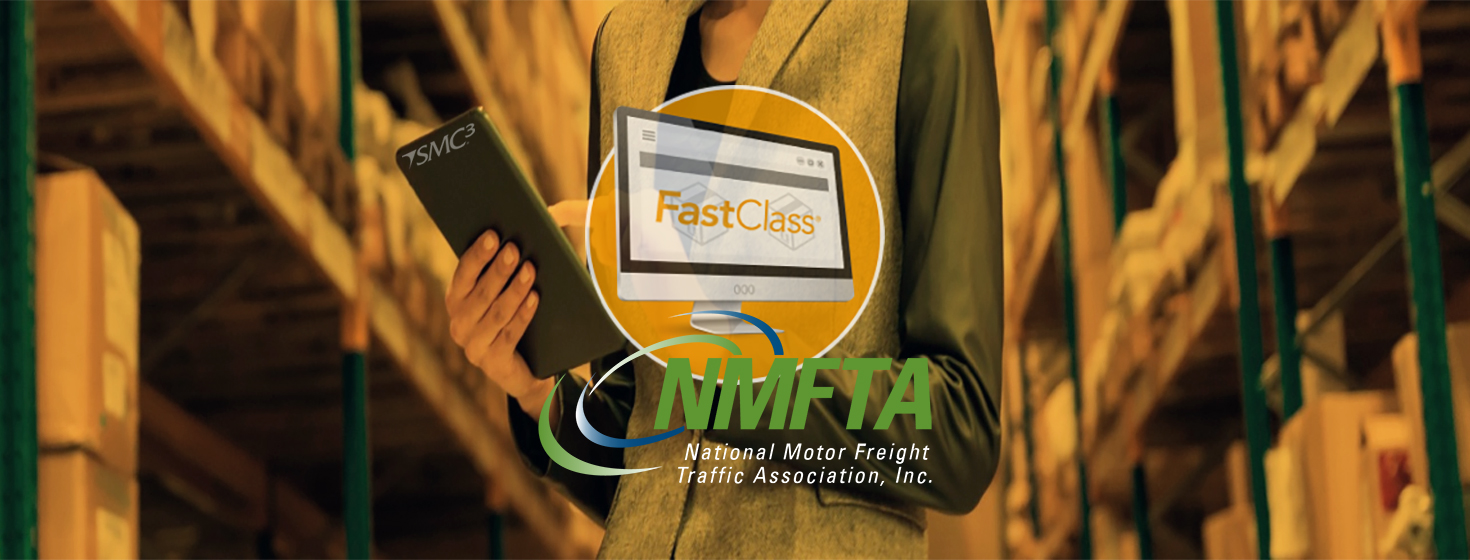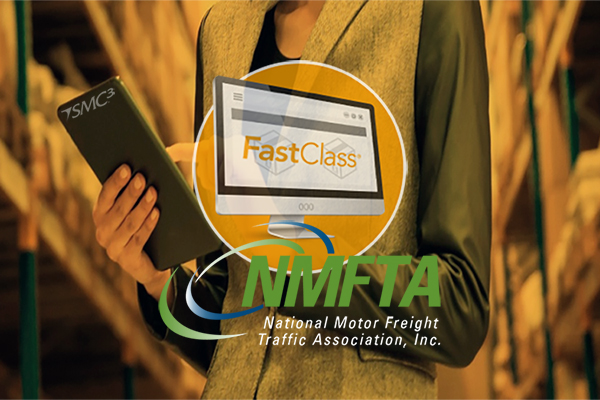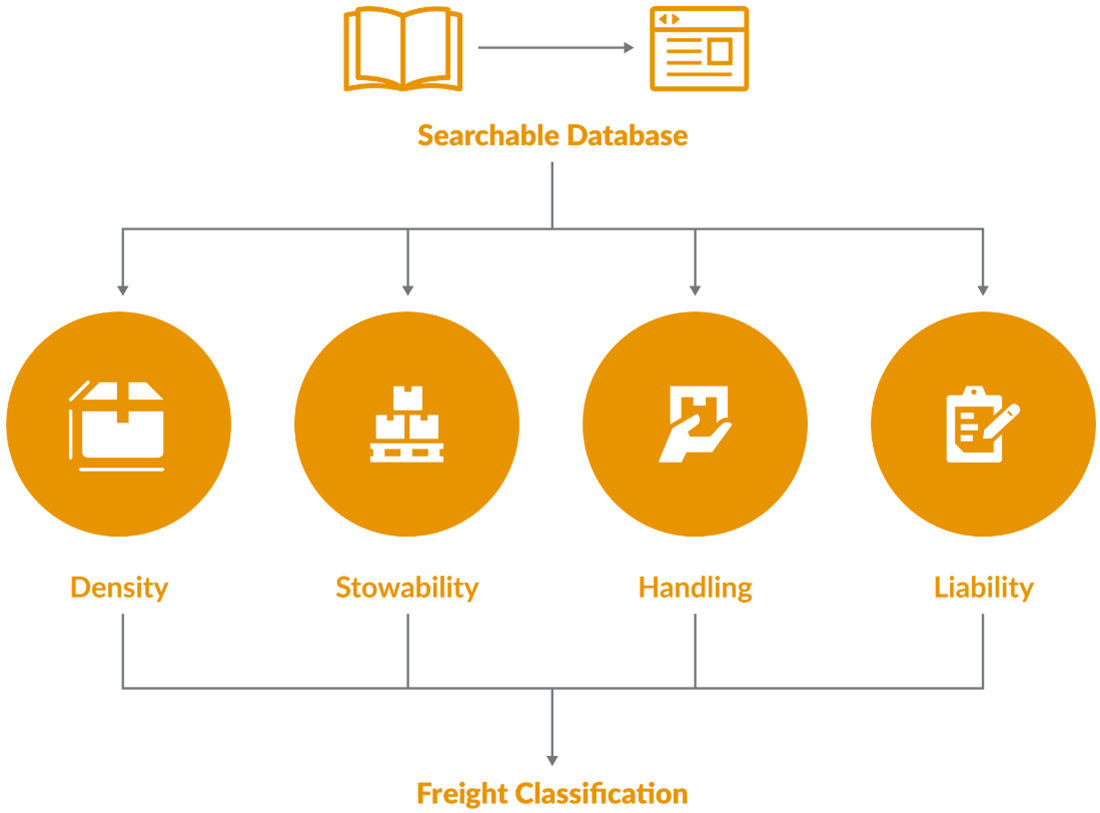What is Freight Class and How is it Measured?

Freight class provides LTL users an agreed-upon standard for classifying and pricing freight based on universally measurable factors - here’s what you need to know about LTL freight classes, how to measure them, and why they’re so important.
For LTL Shipping, Pricing Cargo Correctly can be a Challenge
When everything on the truck can have a different size, shape, weight, density, and value, how do you know what’s a fair rate?
That’s where freight classification comes in. Freight class provides LTL users an agreed-upon standard for classifying and pricing freight based on universally measurable factors.
Here’s what you need to know about LTL freight classes, how to measure them and why they’re so important.
What is freight class?
Freight class is a pricing standard that carriers, brokers, third-party logistics companies, and shippers use to determine how much it should cost to move LTL shipments based on factors like the monetary value, weight, and size of a commodity. The higher the freight class, the higher the cost to move.
Freight class is officially known as the National Motor Freight Classification®, or NMFC® for short. It was developed by the National Motor Freight Traffic Association (NMFTA) and gives LTL carriers, brokers, and shippers a standard to compare commodities for freight identification and pricing. Freight classification is used in negotiation, logistics, and corrections.
How do you determine freight class?
Contrary to what you might assume, size isn’t the only factor you use to classify freight. Freight class is determined by four main factors: density, ease of handling, stowability, and liability.
- Density is the space an item occupies relative to its weight. Density is measured in pounds per cubic foot (PCF). The higher the PCF of freight, the lower the freight class number.
- Ease of Handling: Some cargo needs to be handled in a special way to accommodate its fragility, shape, or hazards associated with its contents. Those can all change a package’s freight classification.
- Stowability: Some freight types can’t be loaded together due to regulations or carrier policies. Hazardous materials or oddly shaped packages, especially ones that can’t be stacked within boxes and crates, usually warrant a higher freight classification and higher cost.
- Liability: Valuable, perishable, and dangerous cargo comes with a higher risk of being damaged, stolen, or negatively impacting other items in the load. Generally, higher liability equals higher freight class and higher cost.
(Freight class can include other factors like volume and the distance the cargo will travel, but they’re usually less of a concern.)
How is freight classified and measured?
There are 18 freight classes, ranging from Class 55 (lowest cost) to Class 500 (highest cost). When PCF goes up, the freight class goes down – and so does cost.
For example, if you have a package with a density of 8.5 PCF, it’d likely be in Class 110, no matter how big or small the package is. But if you had freight with a density of 45 PCF, it’d likely be in Class 55 (again, regardless of its size). The freight with an 8.5 PCF would probably have a higher freight price than the one with a 45 PCF because they’re in different freight classes.
LTL Freight Classification Components
How to determine freight class for something you’re carrying
Generally, when cargo density goes down, the freight class and cost go up. But determining a specific freight class takes just a little bit of easy math. Here’s how to determine freight class for a piece of cargo:
- Weigh the cargo in pounds.
- Measure the cargo’s length, width, and depth in inches. Include packaging in your measurement.
- Multiply the length, width, and height together. This will give you the size of your freight in cubic inches (in3).
- Convert to cubic feet. Divide the in3 of your freight by 1,728 to get the size of your freight in cubic feet (ft3). in3 x 1,728 = ft3
- Convert the weight to pounds per cubic feet to get its density. Divide the weight of your freight by the total ft3 of your freight. Weight / ft3 = PCF
- Follow the NMFC classification chart to match the cargo to the right freight class.
Here’s an example of how to determine the freight class of a piece of cargo:
- A package weighs 25 pounds and measures 24 inches long, 15 inches wide, and 15 inches deep.
- In cubic inches, the package measures 5,400 in3 (24 x 15 x 15 = 5,400).
- In cubic feet, the package measures 3.125 ft3 (5,400 / 1,728 = 3.125).
- The package has a density of 8 PFC (24 pounds / 3.125 ft3).
- The package would be placed in either Class 125 (7-8 PFC) or Class 110 (8-9 PFC) based on extenuating factors like ease of handling, liability, and stowability.
Why freight class knowledge is crucial to LTL carriers
Freight class only applies to LTL shipments and gives carriers and shippers a common ground for pricing and understanding freight costs. Unlike truckload pallets, LTL shipments often contain a variety of products on a single pallet, each with potentially unique characteristics. Freight classification creates a fair, shared standard for pricing that freight.
Classify freight right, the first time
If freight is improperly classified, it can mean frustrating repricing, quick-turn corrections, and messy conflicts. That’s why it’s important to get freight classified right the first time. Moreover, LTL freight specialists need to be able to plan around loads containing cargo with different classifications.
With SMC³’s FastClass® solution, SMC3 has an exclusive agreement with the National Motor Freight Traffic Association – the creators of the NMFC freight classification standard – to provide an online freight classification. FastClass gives carriers, shippers, and 3PLs up-to-date information that lets you classify freight quickly, accurately, and on time with no manual computations. FastClass also offers sophisticated search features, historical classification data, and item-by-item classification views straight from the NMFC classification book.
Learn more about how you can use SMC³’s FastClass solution to plan new product packaging and distribution scenarios with classification in mind, minimize losses, and price freight smarter.
FastClass® | LTL Freight Classification Done Right
Access National Motor Freight Classification (NMFC) standard
Accurate and timely LTL freight classification is critical for accurate shipment rating. FastClass® from SMC³ provides reliable and speedy LTL freight classification content, under agreement with the National Motor Freight Traffic Association (NMFTA).
With FastClass®, avoid unexpected rerates due to freight misclassification. Plan new product packaging and distribution scenarios with shipping costs in mind. Minimize loss and damage by packaging freight according to industry standards.
Article Topics
SMC3 News & Resources
SMC3 Mercury Gate Case Study - Improving Workflows and Enhancing Efficiency with LTL APIs SMC3: Is Technology a Competitive Advantage in the Modern Supply Chain Industry? Armada’s Prather examines the disconnect between the freight economy and the macro economy at SMC3 JumpStart 2024 SMC³’s Solution to the Logistics Industries Talent Problem 2024 Transportation Rate Outlook: More of the same? Refining LTL API Consumption for Optimal Efficiency and Enhanced Services Regulations Impacting Less-than-Truckload More SMC3Latest in Transportation
FedEx Announces Plans to Shut Down Four Facilities The Two Most Important Factors in Last-Mile Delivery Most Companies Unprepared For Supply Chain Emergency Baltimore Bridge Collapse: Impact on Freight Navigating Amazon Logistics’ Growth Shakes Up Shipping Industry in 2023 Nissan Channels Tesla With Its Latest Manufacturing Process Why are Diesel Prices Climbing Back Over $4 a Gallon? More Transportation














